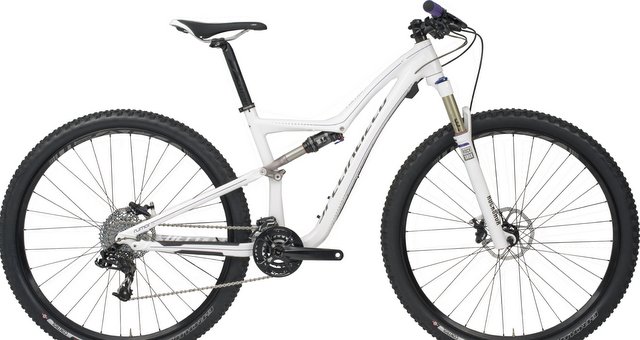 The market is awash with various types of mountain bikes, so let’s start with obvious frame differences. There are traditional hardtails, which are the rigid double-diamond frames everybody knows, and suspension frames that provide some amount of travel via a shock absorber of some kind. It’s quite a minefield out there with so many options – we hope to enlighten you somewhat – so bare with us!
The market is awash with various types of mountain bikes, so let’s start with obvious frame differences. There are traditional hardtails, which are the rigid double-diamond frames everybody knows, and suspension frames that provide some amount of travel via a shock absorber of some kind. It’s quite a minefield out there with so many options – we hope to enlighten you somewhat – so bare with us!
1. Hardtails
Most hardtail mountain bikes are equipped with front suspension forks and open up opportunities for general riding off-road – the forks provide a more comfortable and stable ride over rough terrain.
The more fork travel (suspensions movement) there is, the better the bike will be at coping with uneven trails. You can expect anything from 75mm to 100mm of travel, this amount of suspension enables a fast ride, minimises weight and makes sure every ounce of pedal power is used to propel the bike forward. Most hardtails are used for a mixture of terrain and can handle almost any trail except the seriously rocky, technical descents. This type of terrain is better suited to a full suspension bike and makes for a more comfortable ride.
Some hardtails are designed for urban use and come with rigid forks like you’d see on a city or road bike, these are usually referred to as ‘rigid’ bikes. There are no hard and fast rules that say you can’t ride a rigid bike off-road, but in all honesty they ride better on smooth terrain. Rigid bikes are built to last and can handle the odd bit of rough and often come with eyelets to fix mudguards and pannier racks too, great for commuting.
2. Full suspension
Full suspension bikes have some kind of rear suspension system as well as suspension forks. There are lots of categories or sub-divisions used to separate the broad and varied full suspension market. Those with less suspension travel are aimed towards XC and trail riders looking for a comfortable yet fast and lightweight bike, while at the other end of the spectrum are Freeriders and Downhillers who want loads of suspension travel to carry them over rocks, jumps and down steep trails but not necessarily ride back up.
There are various types of suspension design, based around the position of the shock, pivot points and linkage bars. It would be a rare occurrence these days to find a suspension design that doesn’t work well, except on really cheap suspension bikes – you’d be better spending your money on a quality hardtail.
We haven’t got room for an in-depth look into suspension settings here, another article will follow on this. However, in the mean time, air shocks offer women, who are often lighter and smaller riders, better adjustability when setting pressures and rebound rates. These are important to get right so you use the suspension in the correct way. Once you know the settings that work for you it’s easy to maintain and tweak, depending on the type of riding you want to do.
Frame materials
As with road bikes, in fact all bikes, the frame materials span the realms of price and space age materials. Most are constructed from aluminium tubing, a lightweight and strong material, common across all price points except the very highest. At the top end, we find titanium and carbon fibre frames, they are lighter weight and have better properties for vibration damping and ride performance. You’ll pay considerably more for the pleasure though. There aren’t loads of steel framed mountain bikes about these days, they are rather niche and in our opinion rather lovely, usually found on hardtails rather than full suspension bikes.







